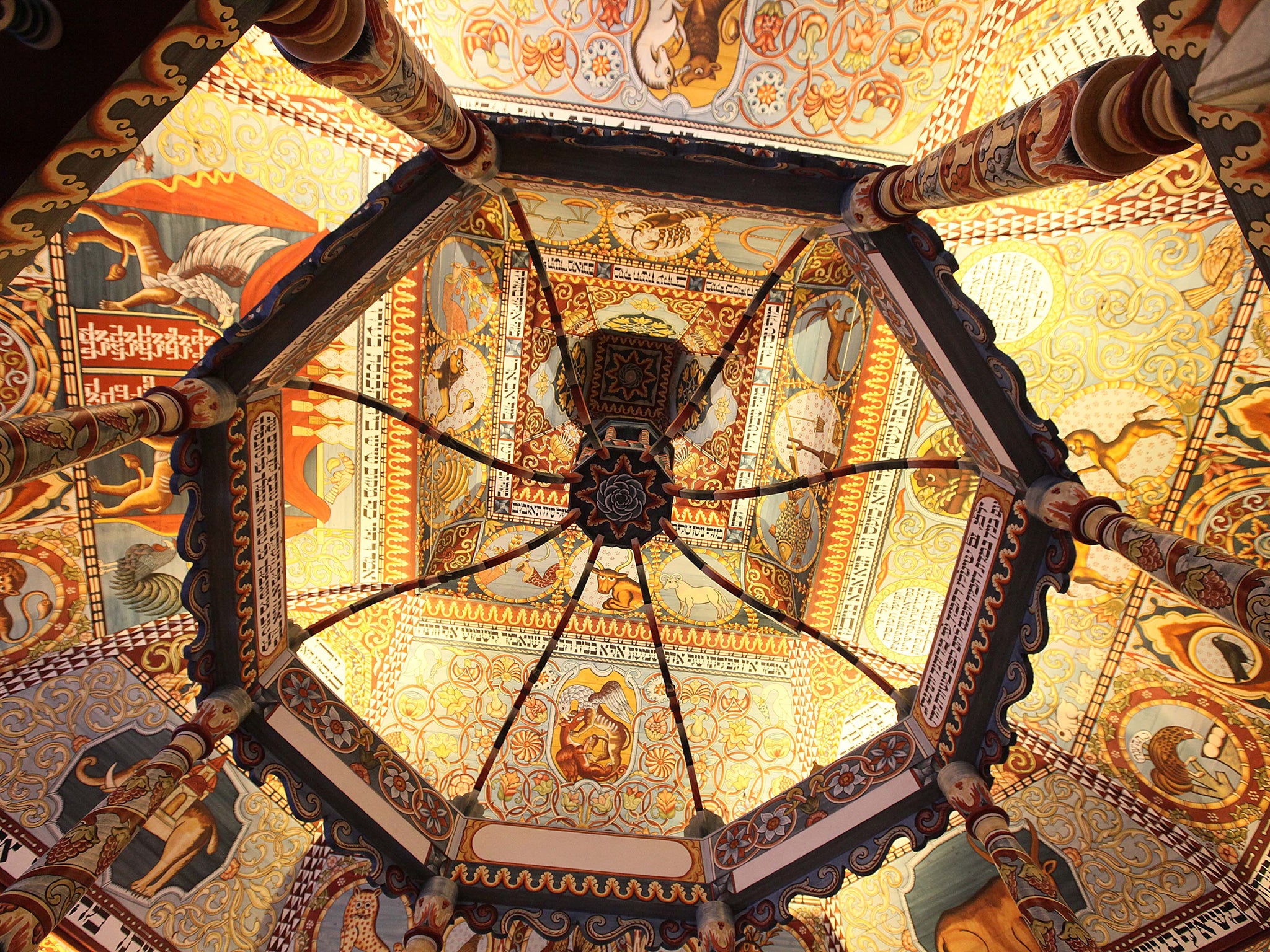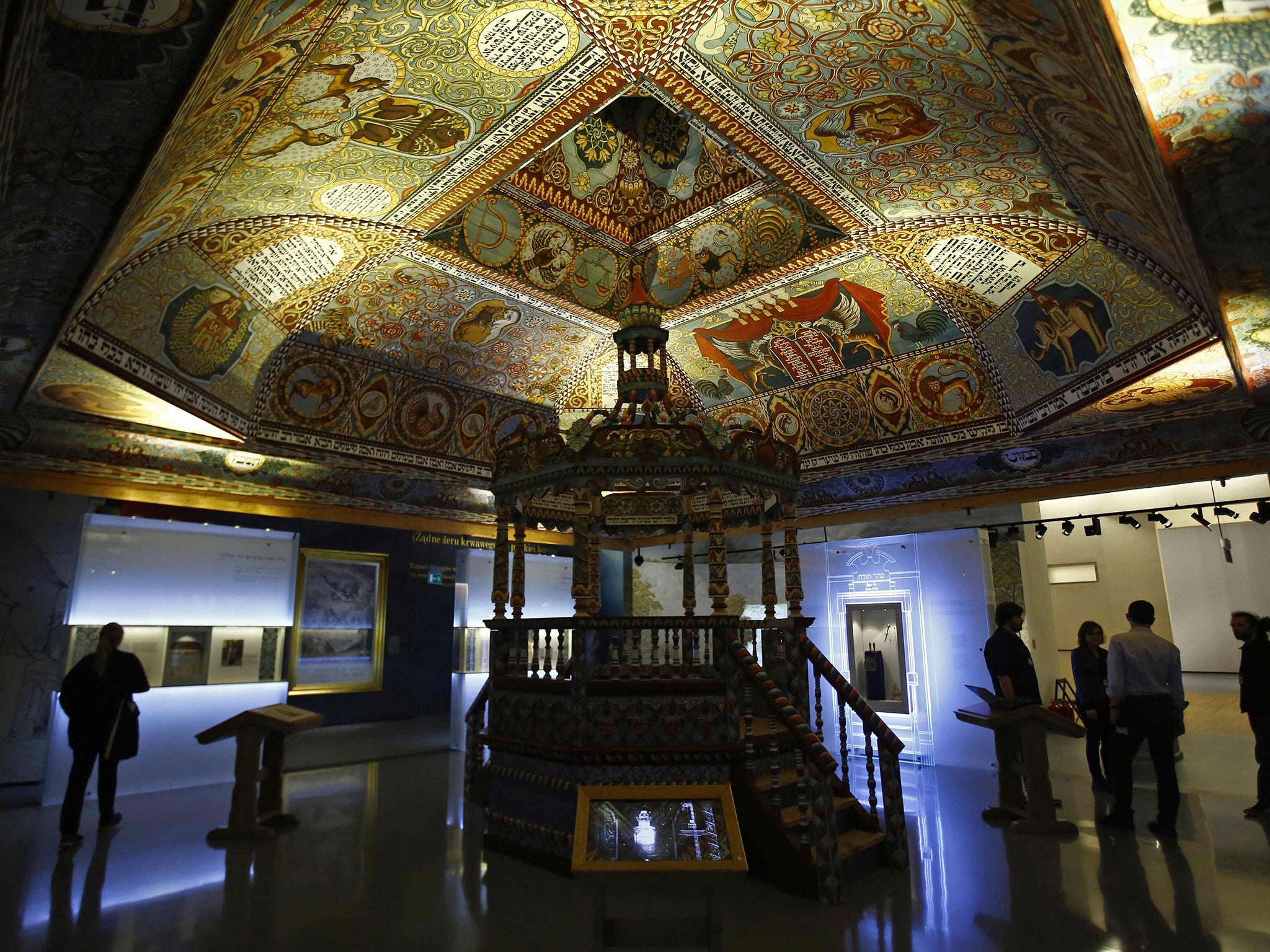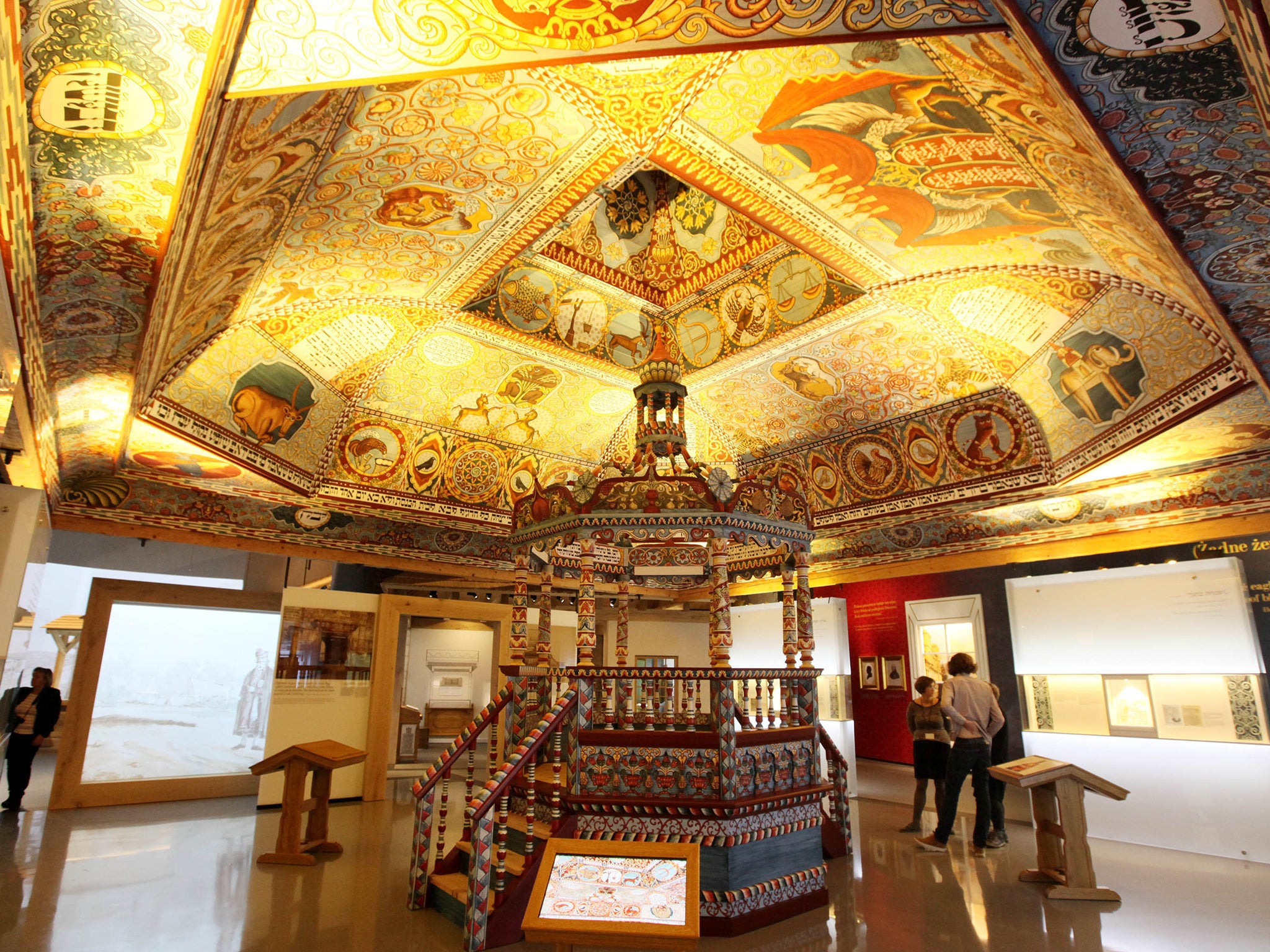Poland recreates lost Jewish art treasure, the Gwozdziec synagogue
Famous 17th century painted wooden synagogue painstakingly recreated

Your support helps us to tell the story
From reproductive rights to climate change to Big Tech, The Independent is on the ground when the story is developing. Whether it's investigating the financials of Elon Musk's pro-Trump PAC or producing our latest documentary, 'The A Word', which shines a light on the American women fighting for reproductive rights, we know how important it is to parse out the facts from the messaging.
At such a critical moment in US history, we need reporters on the ground. Your donation allows us to keep sending journalists to speak to both sides of the story.
The Independent is trusted by Americans across the entire political spectrum. And unlike many other quality news outlets, we choose not to lock Americans out of our reporting and analysis with paywalls. We believe quality journalism should be available to everyone, paid for by those who can afford it.
Your support makes all the difference.A lost Jewish artistic and architectural tradition, destroyed by the Nazis during the Holocaust, has been spectacularly recreated in Poland by an international team of engineers, carpenters and artists.
Before World War Two, north-east Europe was home to more than 200 often spectacular wooden synagogues, at least 50 of which had magnificently painted interiors. Hitler’s death squads burnt the majority to the ground – and today not a single painted or other major example survives.
But now researchers have used old photographs and architectural plans to partially reconstruct one of the finest of those vanished masterpieces.
More than 150 square metres of paintings have been recreated in Warsaw along with complex carpentry replicating the original synagogue’s roof. The paintings – which include literally dozens of animals and zodiac signs – adorn a replica ceiling and cupola.
It is one of the largest replications of historic art and architecture of any culture ever attempted anywhere in the world – and will go on permanent public display as part of Warsaw’s new Jewish museum which opens today, Tuesday.
Based faithfully on the art and architecture of a late 17th and early 18th century synagogue which once stood in the town of Gwozdziec (now in the Ukraine), the 85 per cent scale replica reveals the extraordinary beauty of a type of Jewish art and architecture which tragically no longer exists.
Although most of the great painted wooden synagogues of north-east Europe were burnt down in the Holocaust, Gwozdziec was destroyed a generation earlier – in World War One, during intense fighting between Russian and Austro-Hungarian forces.

Unlike most other synagogue art in other parts of the world, many of the paintings portray figurative images – symbolizing traditional Jewish ethical stories and signs of the zodiac.
The carpentry and paintings have been recreated by scores of Polish, American and other volunteers.
Using traditional 18th century-style raw materials and tools, the project has not only produced a unique recreation of a lost genre of art and architecture, but has also helped academics to more fully understand the practical pigment-mixing, engineering and other challenges faced by the original artists and builders some three centuries ago.
In total, the volunteer artists had to create some 37 different colours and shades from 16 different pigments. Only traditional pigments like woad, charcoal, copper carbonate and different iron oxide-rich earths, were used to produce all the different shades and colours.
The 30-tonne installation, consisting of the replica partial synagogue’s ceiling, cupola and roof (but no walls) is suspended from steel cables attached to the structure of the museum itself. The entire replica has been created by an American historical reconstruction organization, Handshouse Studio, with funding from a New York-based Jewish Cultural heritage charity, the Kronhill Pletka Foundation.
In the original synagogue, destroyed in 1915, the walls were also painted. However, it’s believed that museum planners felt that including them would have interfered with the overall open-plan nature of the museum. Their aim was to produce a spectacular and educational museum exhibit rather than a complete synagogue.

Jews first arrived in Gwozdziec by around 1650. The synagogue was erected by 1700 – and the interior was fully adorned with paintings by 1731.
Around a third of the town, a typical Jewish shtetl, was destroyed along with the synagogue. After World War One ended, a new synagogue was constructed but it was destroyed by the Nazis by 1943. Most of the town’s Jewish population of up to 1,600 were either murdered by Nazi death squads in Gwozdziec itself or deported to death camps.
The replica partial synagogue forms part of Warsaw’s new Jewish museum. Telling the complete thousand-year story of Poland’s Jewish community, the new state-of-the-art permanent historical exhibition, one of the largest of its type in the world, covers 4,200 square metres.
Housed in a purpose-built ultra-modern building constructed on the site of part of the World War Two Warsaw Ghetto, the museum chronicles the development of the first Jewish settlements in medieval Poland, the Jewish community’s economic and political roles in late medieval and early modern times, the development of Jewish towns in the Polish-Lithuanian Commonwealth, prosperity, persecution, the Holocaust, postwar Poland and Jewish cultural and political contributions to Polish history.
The museum’s comprehensive displays use the latest visual and computer technology to discuss key issues in Poland’s Jewish story – cooperation, persecution, conflict, autonomy, integration, assimilation and survival. The museum says that “at each stage of this journey into the past”, it has tried “to be as close to everyday life as possible” and to “give a voice to the Jewish merchants, scholars and artists” of each era, as well as its “rabbis, housewives, politicians, chroniclers and revolutionaries”.
In a sense, the museum provides the complex long-term cultural and political background to the eastern European Jewish experience revealed over past decades to the wider world by the blockbuster musical, Fiddler on the Roof.
Although the museum describes the history of Polish Jewry, it is also relevant to wider Jewish and world history – because around 70 per cent of the world’s 18 million Jews are wholly or partially descended from the Jews of the 16th-18th century Polish-Lithuanian Commonwealth, which at the time had by far the largest Jewish population in the world. Later, prior to the Holocaust, 10 per cent (around 3.5 million) of Poland’s population was Jewish.
The new museum – including the recreated painted glories of north-east Europe’s lost wooden synagogue tradition – is helping to reveal a remarkable chapter in Jewish, Polish and world history.
Join our commenting forum
Join thought-provoking conversations, follow other Independent readers and see their replies
0Comments